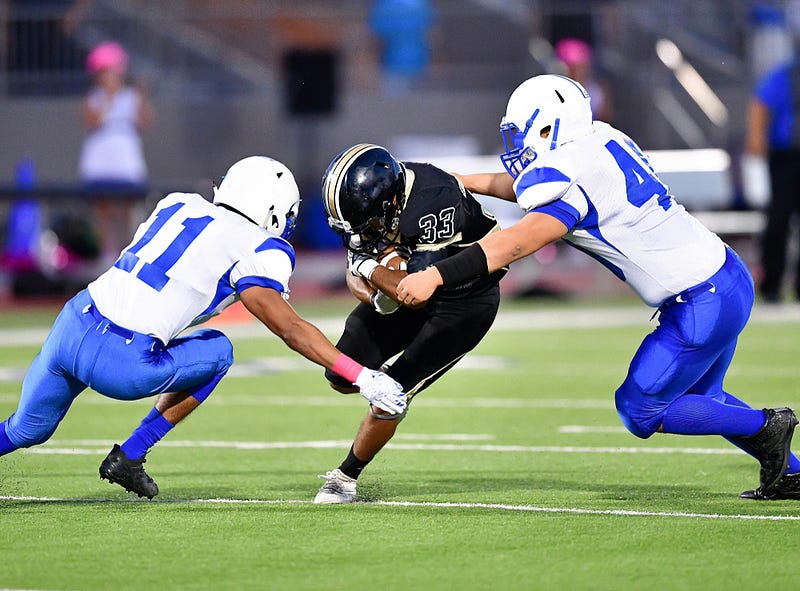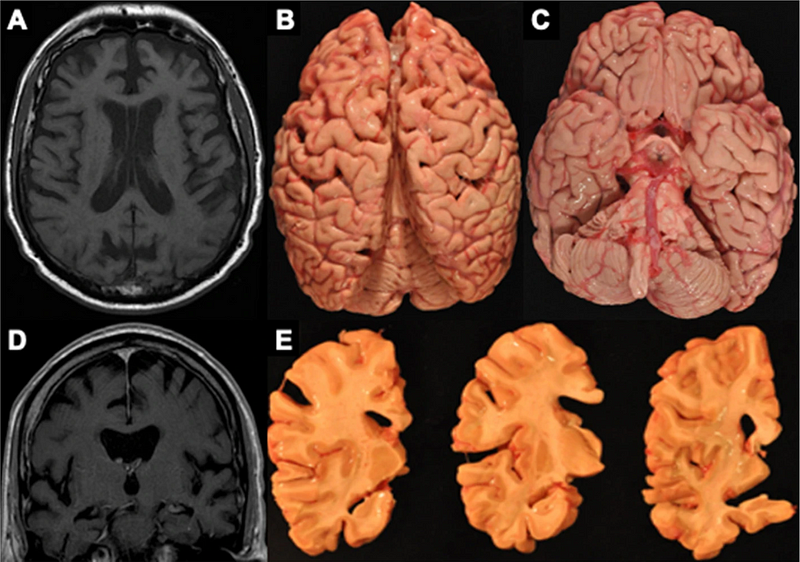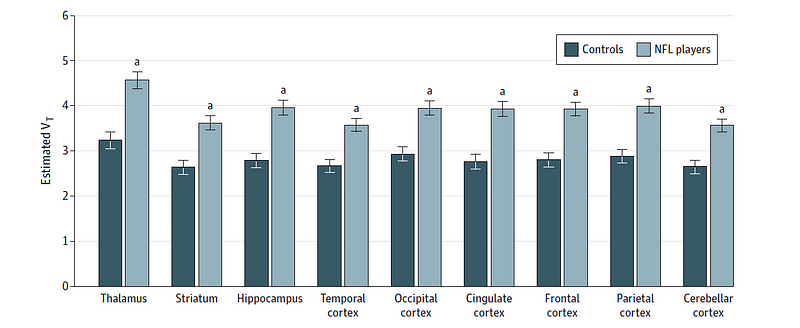Revealing Brain Damage in Former NFL Players: New Insights
Written on
Understanding CTE: A New Perspective
Research has historically shown that chronic traumatic encephalopathy (CTE) could only be diagnosed post-mortem. However, emerging studies are shedding light on this serious condition while players are still alive.

If you're reading this on a Sunday, Monday, or Thursday in the U.S., you might be one of the 20 million fans watching NFL games—myself included. My wife summed it up perfectly: football athletes are unparalleled in their combination of strength, speed, and agility.
However, a more primal aspect of the game captivates us—the intense collisions, the tackles, and the high-impact plays. Yet, the enjoyment of these thrilling moments diminishes when you consider the ramifications of CTE and the toll it takes on players.
A recent autopsy study from Boston University analyzed the brains of 376 former NFL players, revealing that 345—approximately 92%—showed signs of CTE. Although there’s inherent selection bias since players who donate their brains often have underlying concerns, the connection between playing in the NFL and brain damage is becoming increasingly apparent.
The challenge lies in the fact that CTE can currently only be diagnosed after death. While post-mortem examinations provide crucial insights, they are not ideal for developing treatment methods. I was thrilled to learn about a new study utilizing PET MRI technology to detect brain injuries in living NFL players.

Let’s delve into the study published in JAMA Network Open, which introduces an 18-kilodalton protein known as translocator protein (TSPO). Formerly recognized as the peripheral benzodiazepine receptor due to its binding with diazepam, TSPO serves a different purpose—it acts as a sensitive marker of inflammation and repair on the surface of mitochondria. When tissue sustains damage, TSPO levels rise, which can be observed through PET scans using specific tracer chemicals.
With this background, we can explore the findings from the JAMA Network Open study led by Jennifer Coughlin at Johns Hopkins. The researchers enrolled 27 former NFL players, each having played professionally within the last 12 years, with an average playing career of 6 years. The group consisted of 14 linemen, 9 linebackers, 2 wide receivers, and 2 kickers.
To compare, the control group included 27 elite swimmers from NCAA Division III or higher programs, a non-contact sport.
After undergoing a series of neuropsychiatric assessments, both groups participated in PET-MRI scans, leading to striking results. The former NFL players exhibited significantly higher TSPO levels, indicating injury or ongoing repair processes across various brain regions.

Quantitative assessments revealed pronounced damage or repair in the frontal cortex, cingulate cortex, and hippocampus, aligning with autopsy findings related to CTE.

Interestingly, while the cognitive performance of NFL players mirrored that of the swimmers in most tests, they exhibited significantly lower scores in learning and memory assessments. Furthermore, there was greater variability in the NFL players' scores, indicating that the effects of NFL play differ among individuals. Unfortunately, data comparing kickers with other players was not provided.
The study's authors noted that cognitive performance did not correlate with TSPO activation levels in the NFL players. Thus, while overall TSPO levels were elevated, not all players with higher TSPO levels experienced poorer memory performance, suggesting a more complex relationship.
The true utility of these scans may only become evident in the future when we can assess whether these players develop dementia or, ultimately, during autopsy.
I remain hopeful that, whether through this particular diagnostic approach or another method, we will eventually identify indicators of CTE in living players. Without such advancements, effective treatment remains elusive.
Chapter 2: New Research Findings
In the first video titled "CTE in nearly 92% of former NFL players analyzed, study finds," experts discuss the alarming prevalence of CTE among former NFL players, highlighting findings from recent research.
The second video, "Study Finds Brain Damage in Former NFL Players," explores the implications of brain injuries sustained during professional football and the need for further investigation.